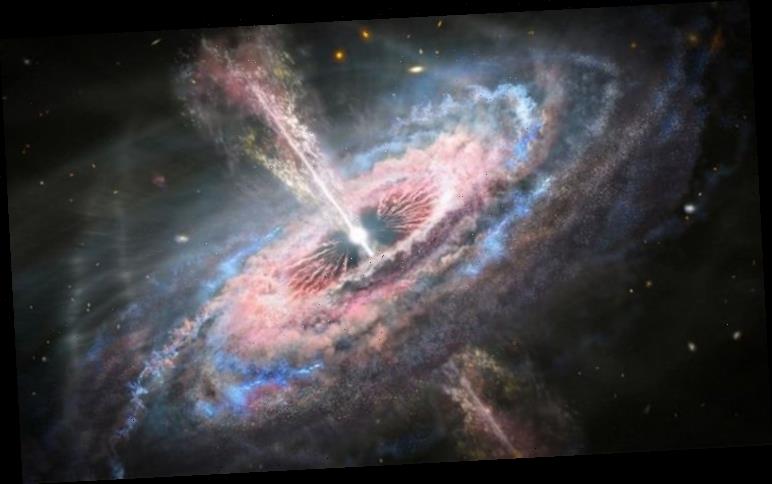

This system is made up of an inner binary with one star (orbit in blue) and a newly discovered black hole (orbit in red), as well as a third star in a wider orbit (also in blue). This artist's impression shows the orbits of the objects in the HR 6819 triple system. And supermassive black holes, such as those found at the center of galaxies like our own, can be anywhere from hundreds, thousands or even billions of times the mass of our sun. Stellar-mass black holes form when massive stars die and they range from a few times the mass of the sun to tens of times its mass. There are two main categories of black holes. “This is more like something that goes ‘bang,’ and it’s the most massive signal LIGO and Virgo have seen.” “This doesn’t look much like a chirp, which is what we typically detect,” said Nelson Christensen, Virgo team collaborator and director of the Artemis Laboratory at the Observatoire de la Côte d’Azur, in a statement. This differs from the signal picked up during LIGO’s first detection of gravitational waves in 2015. And the four little wiggles picked up by the detectors represent a literal bang that traveled across space to reach us on Earth 7 billion years later. The gravitational wave event was named GW190521.
#As material flows into a black hole zip
These two dead stars zip around each other every seven minutes “With these gravitational-wave breakthroughs, it won’t be long until we have enough data to uncover the secrets of how black holes are born and how they grow.”

“Gravitational-wave observations are revolutionary,” Berry said. With this detection, LIGO has observed the unexpected and led to another breakthrough. The waves originated from 7 billion light-years away – the most distant source of them so far. The gravitational wave event only lasted about one-tenth of a second. “Now, we have proof that intermediate-mass black holes do exist,” he said. “Do they grow from stellar-mass black holes, which are born when a star collapses, or are they born via an undiscovered means? Long have we searched for an intermediate-mass black hole to bridge the gap between stellar-mass and supermassive black holes. “They are the million solar-mass elephants in the room,” said Berry, who is also the board of visitors research professor at Northwestern University’s Center for Interdisciplinary Exploration and Research in Astrophysics. Gravitational waves reveal merger between black hole and mystery 'mass gap' object Max Planck Institute for Gravitational Physics/Simulating eXtreme Spacetimes (SXS) Collaboration The gravitational-wave signal produced is consistent with the observation made by the LIGO and Virgo gravitational-wave detectors on August 14th, 2019 (GW190814). The high mass-ratio amplifies gravitational wave overtones in the emitted signal. One black hole is 9.2x more massive than the other and both objects are non-spinning. This image is a still from a video visualization of the coalescence of two black holes that inspiral and merge, emitting gravitational waves. “One of the great mysteries in astrophysics is how do supermassive black holes form?” said Christopher Berry, LIGO Science Collaboration Editorial Board reviewer for the discovery paper, in a statement. Two studies published on Wednesday, one about the gravitational waves event in the journal Physical Review Letters and another detailing the implications of the event in the Astrophysical Journal Letters.

The gravitational waves were traced on Earth on May 21, 2019, by the dual detectors of the National Science Foundation’s Laser Interferometer Gravitational-wave Observatory in the US, as well as the Virgo gravitational-wave detector in Italy. The signal astronomers traced through gravitational waves likely happened the moment the two black holes came together. It’s more than that of stellar mass (the mass of stars) and less than that of supermassive black holes. This newly discovered black hole has what’s called an “intermediate” mass because its mass is between 100 and 1,000 times that of the sun. And those ripples took 7 billion years to travel across space to reach us on Earth. The “bang” of energy created by this black hole merger released through gravitational waves, or ripples in the space-time continuum, equaled the energy of eight suns. This collision created the first intermediate-mass black hole ever discovered, and it has a mass of 142 times that of our sun. Astronomers have detected the most massive merging of two black holes yet through the oldest and most distant gravitational waves to ever hit Earth.


 0 kommentar(er)
0 kommentar(er)
